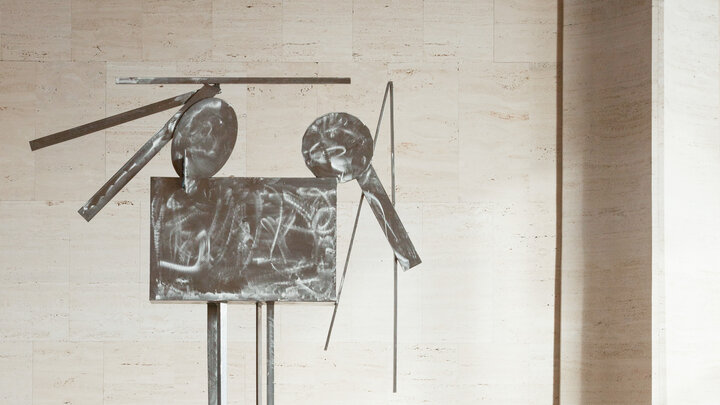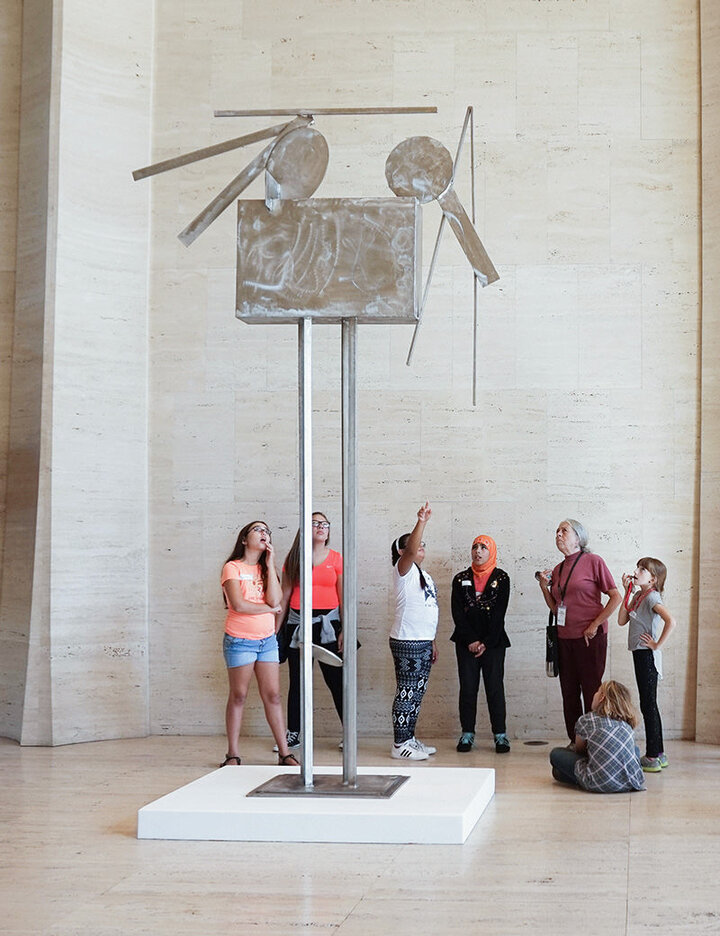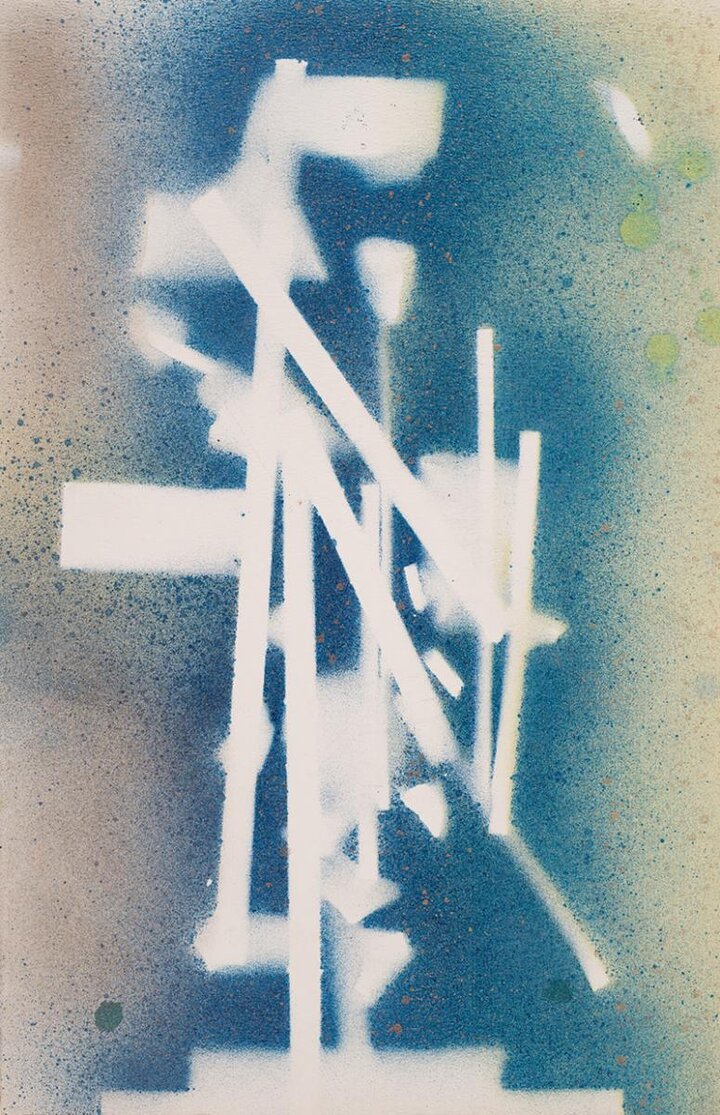
David Smith worked as a welder at the Studebaker automobile plant in South Bend, Indiana, during the summer of 1925. The skills he gained on the job would become essential in the creation of his massive welded metal sculptures and would help him gain recognition as a leading American sculptor of his generation.
Guggenheim Fellowships in the early 1950s provided Smith the means to begin making large-scale iron and steel works, many of which contain totemic forms that demonstrate the artist’s own interest in Neolithic art and those of the abstract expressionists in “primitive” art.
Despite appearing to have been made spontaneously, Smith’s balanced, geometric sculptures were carefully designed to be seen from all angles, changing their surroundings as the viewer changes perspective. Smith thought of his work as “calligraphy in space.”
Although best known for monumental stainless steel constructions such as Sheldon's Superstructure on 4, Smith pursued his ideas in a visual language that spanned painting, drawing, and sculpture. Smith worked deftly across these media and developed a new technique for drawing in the course of fabricating sculpture. After welding pieces of steel on his studio floor, Smith discovered that the flying sparks left behind a burned, stencil-like image of the sculpture. He then translated that effect to canvas and paper by spraying and removing scraps of cardboard, metal, and other materials.

Decatur, IN 1906–Bennington, VT 1965
Superstructure on 4
Stainless steel, 1960
139 3/4 × 79 3/4 × 22 inches
University of Nebraska–Lincoln, bequests of Frances Sheldon and Adams Bromley Sheldon, U-656.1969

Spray enamel on paper, 1961
17 1/2 × 11 1/2 inches
Sheldon Museum of Art, University of Nebraska–Lincoln, Anna R. and Frank M. Hall Charitable Trust, H-3112.2006